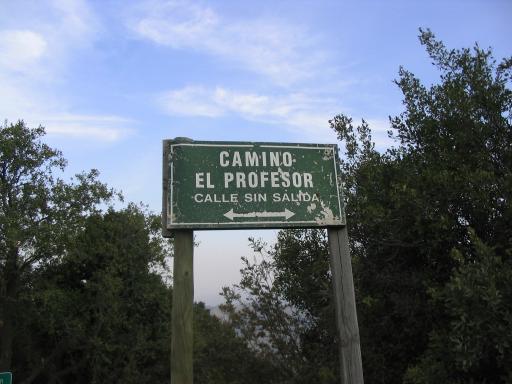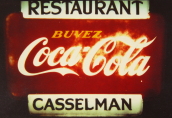Erasmus, Moriae Encomium, 1508
J'aime mieux etre incivil qu'ennuyé.
Jean D'Alembert
"Are you aware, sir, that you are being rude?"
"Quite. I always am. It is so good for people."
From A lesson in crime
by G. D. and M. Cole
Why is mathematics teaching so poor? "Let us ask why on earth the Philosopher is contented with obscure teaching. We reply that it is just as in the temples, where curtains are used for the purpose of preventing everyone, and especially the impure, from encountering things they are not worthy of meeting. So too Aristotle uses the obscurity of his philosophy as a veil, so that good people may for that reason stretch their minds even more, whereas empty minds that are lost through carelessness will be put to flight by the obscurity when they encounter sentences like these." (The commentator Ammonius (5th c.) On Aristotle's Categories, Prolegomena 7.7-7.14. Translated by S. Marc Cohen and Gareth Matthews)
Those whom the gods wish to destroy universities, they make deans.
From the autobiography of Salvador Luria, Nobel Prize winner
for his work in genetics
And to illustrate the point:
... both as head of a computer science department
and then now my second job as a dean, having computer science
departments, I would always get into these discussions with people in
the math department saying, it makes sense that your people teach more
courses per semester than the computer scientists do because you're
still teaching the same courses that you taught 50 years ago, whereas in
the computer science you have to continually redevelop materials so that
you really are covering the most up to date things.
Maria Klawe, former Dean of Science at U. B. C.,
speaking
to Bill Gates
Department of Mathematics,
University of British Columbia,
Vancouver V6T 1Z2, Canada
e-mail: cass@math.ubc.ca
Office telephone: (604) 822-2714
Fax: (604) 822-6074
Office: 107 Mathematics Building
Research
- Publications
- Essays
- Classic lecture notes
-
U.B.C. Ph. D. students' theses
- Glen Pugh's thesis on Lanczos' formula (2004)
- Hesameddin Abbaspour's thesis on reduction theory for Kac-Moody groups (2012)
- Liu Xinyu's thesis on interwining operators (2018)
Courses
- Courses and course notes, year by year
- A talk on using the Internet for teaching mathematics
- Also an RPN programmable calculator applet embedded into a Web page.
- MathSheet, a spreadsheet for doing mathematics -
- A short course on Coxeter groups sponsored by the CRM in Montréal, January 2002. Lectures by me, Fokko Ducloux, Meinholf Geck, and Robert Bédard.
Mathematical graphics
-
 PiScript
PiScript
- Mathematical Illustrations - a manual of geometry and PostScript
- A note on generating perspective transformations
-
Main graphics page
Including techniques for putting TEX labels into PostScript figures, a colour cube with all 216 browser colours, and the manual for dvips.
Programs
 Langton's ant
Langton's ant
 FFT
FFT
 The Henon map
The Henon map
 A tutorial on Bezier curves
A tutorial on Bezier curves
Including some simple Java demonstrations.
Frivolities
Including a hypertext version of a Latin dictionary, PostScript files for Dynkin diagrams, and Coxeter paper.
The UBC Sun SITE
 The main page
The main page
 Robert Langlands' collected works
Robert Langlands' collected works
NOTE: This site is no longer being maintained.
 The IAS site for Robert Langlands' collected works
The IAS site for Robert Langlands' collected works
This is now the only active source for Langlands' work.
 The Euclid project (including all of Byrne's Euclid)
The Euclid project (including all of Byrne's Euclid)
Other links in automorphic forms
 James Arthur's collected works at the University of Toronto
James Arthur's collected works at the University of Toronto
 Diana Shelstad's home page
Diana Shelstad's home page
 Roy Fuller's 1964 notes from Langlands' course on class field theory
Roy Fuller's 1964 notes from Langlands' course on class field theory
 Functoriality in the theory of automorphic forms. Jim Milne's translation of an
semi-autobiographical essay titled "Funktorialität ..." by Langlands, originally in German.
Functoriality in the theory of automorphic forms. Jim Milne's translation of an
semi-autobiographical essay titled "Funktorialität ..." by Langlands, originally in German.
Mathematical notes
 Symmetry and the fine structure of regular polyhedra
Symmetry and the fine structure of regular polyhedra
| An introductory essay on the symmetry groups of regular polyhedra, and a construction which generalizes to arbitrary regular figures. |
 Calendars and the uniform passage of time
Calendars and the uniform passage of time
| A mathematical explanation of the sort of formula often used to calculate intervals of time between dates. |
 The Euclidean algorithm
The Euclidean algorithm
|
A brief note on a Java implementation
of the Euclidean algorithm to find
k and l with
|
 Kepler in 2D
Kepler in 2D
| A proof of Thue's theorem on the densest packing of uniform disc in 2D. (To be posted on Tony Phillips' What's new in math) |
Mathematical classics
 G. P. Dandelin - Hyperboloids of revolution
G. P. Dandelin - Hyperboloids of revolution
| A translation of the paper "Sur l'hyperboloid de revolution" (1826) by G. P. Dandelin, in which he recalls his construction of the focal points of conic sections of circular cones, and extends it to sections of one-sheeted hyperboloids of revolution. This includes nice geometrical proofs of the theorems of Pascal and Brianchon on inscribed and circumscribed hexagons of ellipses. See also the notes on Pascal's Theorem. |
 H. J. S. Smith - Note on
continued fractions
H. J. S. Smith - Note on
continued fractions
| This is the paper in which Smith proposed the now classical geometrical interpretation of continued fractions in terms of lattice points in the plane, as well as another little known one on the line. |
 E. Rutherford -
The scattering of alpha and beta particles ...
E. Rutherford -
The scattering of alpha and beta particles ...
| This is the classic paper in which Rutherford describes how he discovered the atomic nucleus |
 The Calendar
The Calendar
| The entry from the 11th Edition of the Encyclopaedia. |
 Archimedes - The quadrature of the parabola
Archimedes - The quadrature of the parabola
| Heath's translation. |
Java and mathematical publication
 My talk
at MSRI on this topic at the December 1999 conference on the future of
mathematical communication
My talk
at MSRI on this topic at the December 1999 conference on the future of
mathematical communication
Internet economics in the 17th century:
... there is a strong and insistent voice
preaching that there are no manias
and bubbles,
and that the tulip episode in the
Dutch Republic was a natural consequence of
the fundamental fact that rare
specimens of tulip are difficult to breed,
but once bred easy to propagate.
Charles Kindleberger,
Manias, Panics, and Crashes, p. 4

|
Quis est omnium qui modo cum Musis, id est cum humanitate et cum doctrina, habeat aliquod commercium, qui se non hunc mathematicum malit quam illum tyrannum? Cicero, Tusculan disputations, musing upon the grave of Archimedes |
- `It ought, you know,' Tietjens said with soft dangerousness,
`to be "Kisses mingled with sad tears - Tristibus
et lacrimis oscula mixta dabis" ... '
- `I'm hanged if I ever could,' she exclaimed explosively.
`A man like you could lie in a ditch and I'd never come near.
You're desiccated even for a man who learned his Latin from the Germans.'
- `Oh well, I'm a mathematician,' said Tietjens.
From Some do not by Ford Maddox Ford
... Using a few two-letter commands,
you can use the included Terminal program to perform
powerful instantaneous operations, such
as renaming, moving,
or deleting huge numbers of files at once.
From a review of OS X on p. 48 of the
December, 2000 issue of MacWorld
Question. Could you use microwaves as a way of heating
yourself to stay warm in winter without heating your
whole house?
Answer. Absolutely ... A lot of us had thought, Oh gosh, wouldn't
this be a great way to heat yourself in a cool house? [Robert V. Pound]
wrote the paper on it. It is known as the Pound proposal,
and we are still pushing it as one of the peaceful uses of microwave
energy.
From the N.Y. Times
interview with Eleanor Adair
, page D7,
January 16, 2001.
... the two cardinal rules of fishing are:
(1) Never drink before you wade;
(2) When the fly of choice is a Woolly Bugger, use worms.
From the N.Y. Times Outdoors column
of April 2, 2002, by James Gorman

(Contributed by Richard Froese, taken in Chile)

(A postcard bought in Berlin)

